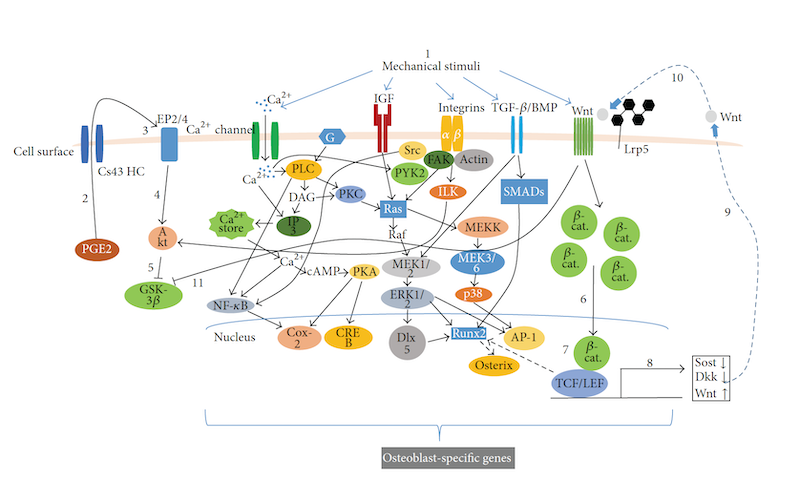
Cellular biology and biomedical science are dominated by approaches which largely neglect the role of material (the structural building blocks of the organism). Research in these areas has been dominated by structure-less biochemical, hormonal, neurological and genetic theories of the organism.
Over the last 20 years, the emergent field of mechanobiology has enriched these structure-less perspectives. From a historical perspective, mechanobiology can be viewed as a revival of the structuralist approaches which underpinned biological science during the preceding 200 years – before our more recent love affair with molecules and genes.
Mechanobiology is elucidating how materials assemble and organise to construct the organism across all physical scales. Mechanobiology is revealing an architecture based on connectivity and material continuity. This architecture influences self-organisation and modes of communication within the organism. With regard to embodiment, mechanobiology explains many structurally adaptive responses including tissue remodelling – a process we like to refer to as biomechanical homeostasis.
Mechanobiology can be described as the conversion of mechanical forces into chemical signals which then modify physical architecture. This process highlights the integration and continual interplay between structure and function. This interplay can be loosely translated as ‘you are what you seat’. Meaning that, the way you use your body is inscribed into its physical architecture – which then influences function – which is then inscribed into physical architecture etc.
Similarly, the organism that you become is created by the life that you live – this has been elegantly described by Francisco Varela as ‘a path made in walking’.
FEATURED IMAGE:
Yi-Xian Qin & Minyi Hu. Mechnotransduction in musculoskeletal tissue regeneration (2014).
